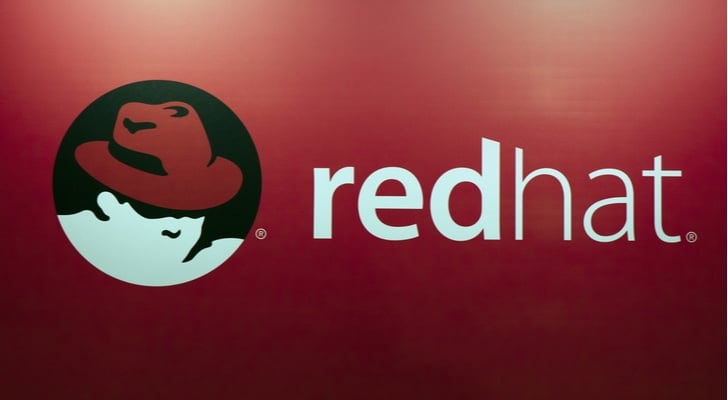On the surface, Red Hat (NYSE:RHT) is a cloud-computing company that should receive consistently strong investor sentiment. And just prior to the company’s first-quarter earnings report, Red Hat stock was blisteringly hot. From the beginning of January to June 21, shares gained nearly 37%.
But since June 21, the situation changed dramatically, with RHT stock down almost 14% in the markets. On paper, the company actually produced a solid performance for Q1. Against an earnings-per-share consensus target of 69 cents, actual EPS came in at 72 cents. Moreover, analysts expected RHT to record $807.5 million in revenue, but the company outshined with $813.5 million.
So what was the issue?
Management unfortunately offered up weaker-than-expected guidance. Red Hat substantially reduced its profitability and growth expectations for Q2, and pared down its sales forecast for 2018. Chief financial officer Eric Shander released a statement that the leadership team cut expectations only to adjust for foreign-exchange rates.
The markets, however, weren’t having any of it, and they are the ultimate arbiters. Following the Red Hat earnings Q1 conference call, RHT stock plummeted over 14%. Wall Street continued to punish shares before it eventually stabilized above the $140 level.
But the lowered guidance only tells part of the story. The overriding concern that investors have is competition. While Q1 total revenues were solid, analysts noted surprising weakness with subscription sales and renewals.
A key contributor to lowered sub growth are alternative cloud providers offering services on “containers.” To very briefly summarize, a container is a cloud-computing platform that allows multiple applications to run efficiently on the same operating system. Alphabet (NASDAQ:GOOG, NASDAQ:GOOGL) is a prime example of a container operator.
Management claimed there was nothing to worry about. Unfortunately, Q2 did Red Hat stock no favors.
Red Hat Earnings Produce Another Mixed Bag
With a chance to right the ship and prove the bears wrong, the Red Hat earnings for Q2 was critical from a PR perspective. However, the cloud company offered more of the same: a few positives, and some negatives.
Again, in the absence of context, RHT appeared to be on the right track. Against an EPS consensus forecast of 82 cents, the company delivered 85 cents. This was at the very top of the estimate spectrum, which ranged from 81 cents to 85 cents.
In the year-ago quarter, RHT reported EPS of 77 cents. However, at the time, the magnitude of the Red Hat earnings beat was nearly 15%. This time around, the earnings surprise was less than 4%.
The revenue picture, though, was a glaring miss
. Analysts expected $830 million, which was nearer the lower end of individual estimates. Even then, the tech company could only muster $822.7 million. The most bearish analyst called for $824.9 million.
If that wasn’t enough, management again guided down the next quarter. For Q3, they’re expecting EPS of 87 cents, and revenue between $848 million to $856 million. Previously, consensus targeted EPS of 92 cents, and $862.7 million in revenue.
If the bulls have any one takeaway from the most recent Red Hat earnings report, it’s that the markets didn’t overly penalize RHT stock. That said, I wouldn’t get too comfortable.
The leadership team disclosed that full-year revenue will come in between $3.36 billion to $3.4 billion. Let’s assume they hit the higher end of this forecast. That would represent 16.4% annual growth. The concern for Red Hat stock is that between fiscal 2009 through 2018, annual growth averaged 18.2%.
This provides ammunition for naysayers that indeed, RHT faces unexpected challenges. Likely, the competition from containers is more damaging than previously advertised.
The Bears Are Probably Right on Red Hat Stock
I’m not sure if “fan boys” for Red Hat stock exist, but bear in mind I’m not trying to ruffle any feathers. I don’t have any skin in this game. Speaking from a purely objective point-of-view, I think the bears have the better argument … at least for now.
I get the impression that management is playing down the competition risk. But in the tech world, you can never take anything for granted. Despite the company’s partnerships with Juniper Networks (NYSE:JNPR) and Microsoft (NASDAQ:MSFT), the industry is vulnerable to commoditization. And as we have seen, customers can jump to another platform.
These early signs that RHT is experiencing sub-renewal difficulties is particularly worrisome for Red Hat stock. Almost every year, the company’s subscription sales take home a greater share of total revenue. In 2009, subs represented 83% of all sales. Last year, the already-high figure jumped to 88%.
Now you’re adding the fact that competitors are offering potentially superior services packaged in containers? If subs take a beating, RHT stock will too. I don’t know if I want to take that chance right now.
As of this writing, Josh Enomoto did not hold a position in any of the aforementioned securities.

